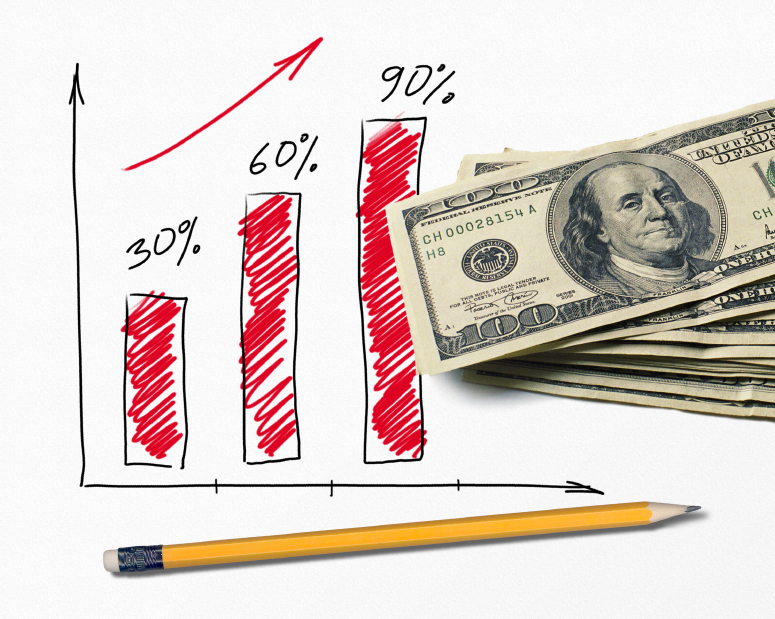A Recruiter’s Perspective
Chase Johanson, Hospital Supply Recruiter, Gibson Consultants
The Value Analysis Professional Vs. the Rising Cost of Healthcare
According to projections, “Under current law, national health spending is predicted to grow at an average rate of 5.5 percent per year for 2017-26 and to reach $5.7 trillion by 2026.”1
The demand to more efficiently supply the healthcare industry has grown exponentially, and value analysis is no pawn in the chess match. Healthcare supply chain has been increasingly making its way to the forefront of hospital discussions over the past 10 years and for good reason. Managing the expense of healthcare is the number one challenge facing the industry.
The shift from reactive to proactive sourcing and purchasing is a philosophy that many have adopted through initiatives such as category management and value analysis. What practices will the star supply chain/value analysis professionals need in their tool kit to adapt to the future of healthcare – driven by technology?
Supply chain is a service industry, in which the beneficiaries are the clinicians and, ultimately, the patients. One of the goals of supply chain is to establish a foundation for more positive patient outcomes at lower costs. But there is often a gap between the business side and the clinical side of healthcare organizations. The larger the gap, the more difficult it can be to understand the full picture of supply chain within an organization.
So, how are health systems using clinical personnel to improve value and bridge the gap between the business side and the clinical side of supply chain? The price of healthcare continues to rise, and many organizations, although practicing value-based purchasing, still do not use it to its fullest potential. I suspect the remedy to this problem is the self-education of supply chain professionals and the personal desire to understand and take full advantage of the many moving parts within the supply chain machine.
The Balancing Act of Well-Rounded Value Analysis Professionals
According to a recent article in a trade publication, “Determining the clinical efficacy of a product is now a collaborative event with physicians, nursing, infection prevention, employee health, [and] wound care specialists working together to ask the critical questions to thoroughly vet a product.”2 This clinical experience allows supply chain professionals to facilitate multi-departmental collaboration about the efficacy of a product.
Managing Physician Preference Items (PPI’s), actively identifying opportunities to renegotiate contracts, and bringing on more advantageous business relationships can be difficult while also trying to please practicing clinicians. Further, lowering costs by standardizing product offerings and eliminating waste within the supply chain, while maintaining positive patient outcomes, is a continuous uphill climb. The best value analysis professionals can juggle these tasks and communicate with doctors and clinicians, explaining the rationale for tough decisions that help create a competitive advantage for the hospital/health system.
Finally, cultures and visions vary from organization to organization. This can be exacerbated by the continuation of mergers and acquisitions. The management of some organizations can be indecisive about what they want to achieve, increasing the importance of proactive decision making at the individual level. Finding the right individual for each organization’s unique position continues to be a struggle. One thing is certain: The Center for Disease Control (CDC) states, “Total national health expenditures as a percent of Gross Domestic Product is (about) 17.8%.”3 Of this expense, 50% stems from hospital care and physician and clinical services. This stat speaks to the importance of supply chain professionals taking on the personal responsibility of seeking out education in value analysis.
Best Practices
The following value analysis practices can contribute to reducing cost and improving patient outcomes.
VALUE-BASED PURCHASING
Value analysis professionals seek to drive costs down and improve quality of care in many ways. Three major activities include new product introduction, standardization of products, and value-based purchasing.
Value-based purchasing (VBP) “is a form of payment that holds healthcare providers accountable for both the cost and quality of care they provide.”4 The transition from fee-for-service to the value-based care model has changed the way hospitals are incentivized for the care they deliver. Healthcare organizations are now being reimbursed for the cost and quality of care versus the number of procedures or services performed. Many providers have found value analysis to be the answer to determining the cost and quality of products being used in their organization.
Value analysis professionals are looking not only at the costs of products being used at an organization, but the data behind patient outcomes associated with these products.
New products are implemented constantly. Value analysis must weigh the benefits to both the supply chain and the clinicians. Cost savings stem from these and other decisions such as lowering return rates of patients by introducing a more hygienic product line. One thing is clear: Value analysis committees must have the proper data to support their decisions and effectively influence clinicians. Fortunately, technologies that provide insight to these data are becoming more readily available.
STANDARDIZATION
After mergers and acquisitions, health organizations can find themselves swimming in similar products from different distributors and sources. By standardizing products across the organization, value analysis can reduce costs and gain supply chain purchasing leverage. PPI’s in nursing and O.R. tend to be a common area where standardization is difficult, yet effective. It is important for organizations to use value analysis to make these careful decisions that will benefit the supply chain and the clinical side.
Recruiter’s Advice
Value analysis is an ever-evolving way of life within healthcare supply chain organizations. One solution to finding the right fit for your organization is emphasizing the importance of clinical and business interaction. Spending time in the clinical world reveals an understanding of what is necessary and what is preferred, to which many supply chain and business administrators never gain exposure to. The next generation of supply chain professionals must spend adequate time with doctors and nurses in order to add specialized strategic value to their organizations. This is essential and arguably the first place leaders should target to start to provide better healthcare for patients at lower costs. Supply chain must understand what is best for the patient, clinician, and the business side of healthcare. However, it must start at the individual level; walk the floor
Works Cited
Hansen, Lynn A., et al. “Value Analysis: No Longer the Buzz Word in Healthcare, but a Way of Life.” Becker’s Hospital Review, 19 Oct. 2015, www.beckershospitalreview.com/finance/value-analysis-no-longer-the-buzz-word-in-healthcare-but-a-way-of-life.html.
“National Center for Health Statistics.” Centers for Disease Control and Prevention, Centers for Disease Control and Prevention, 3 May 2017, www.cdc.gov/nchs/fastats/health- expenditures.htm.
“National Health Expenditure Projections 2017-2026.” Cms.gov, Centers for Medicare & Medicaid Services, 17 Apr. 2018, www.cms.gov/Research-Statistics-Data-and-Systems/Statistics- Trends-and-Reports/NationalHealthExpendData/Downloads/ForecastSummary.pdf
“Value-Based Purchasing (VBP) – HealthCare.gov Glossary.” HealthCare.gov, www.healthcare.gov/ glossary/value-based-purchasing-vbp/.






